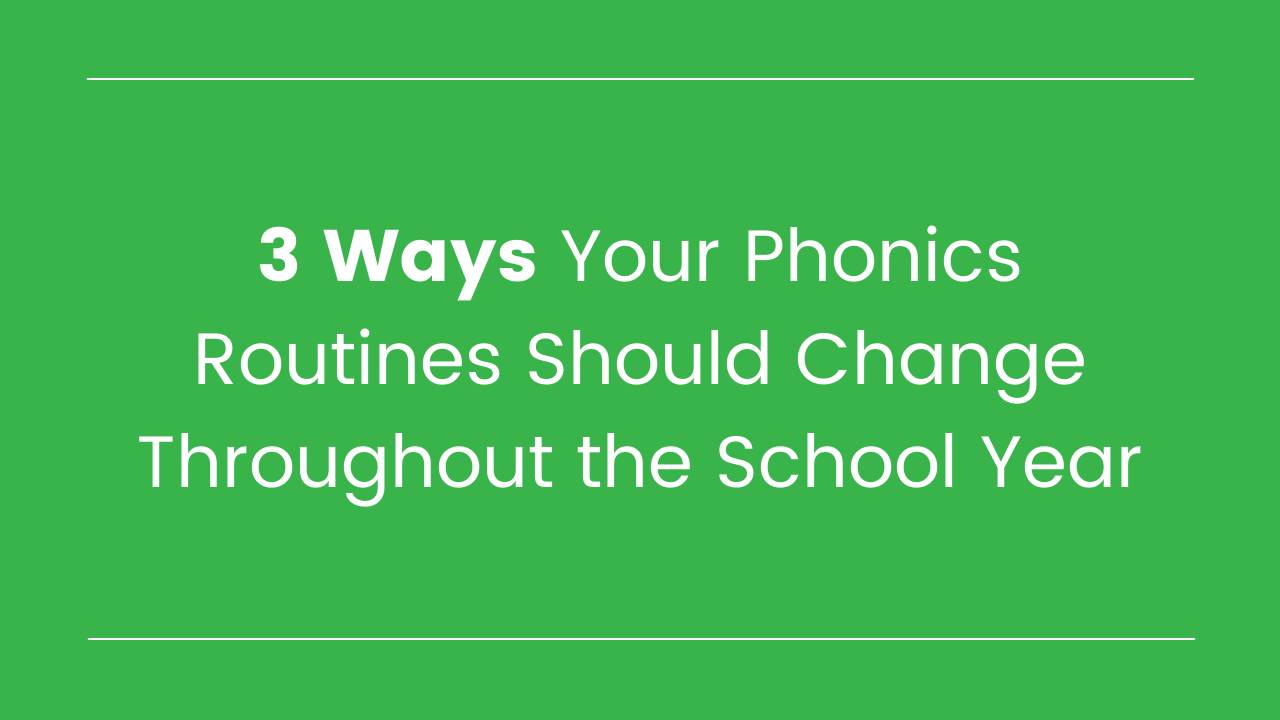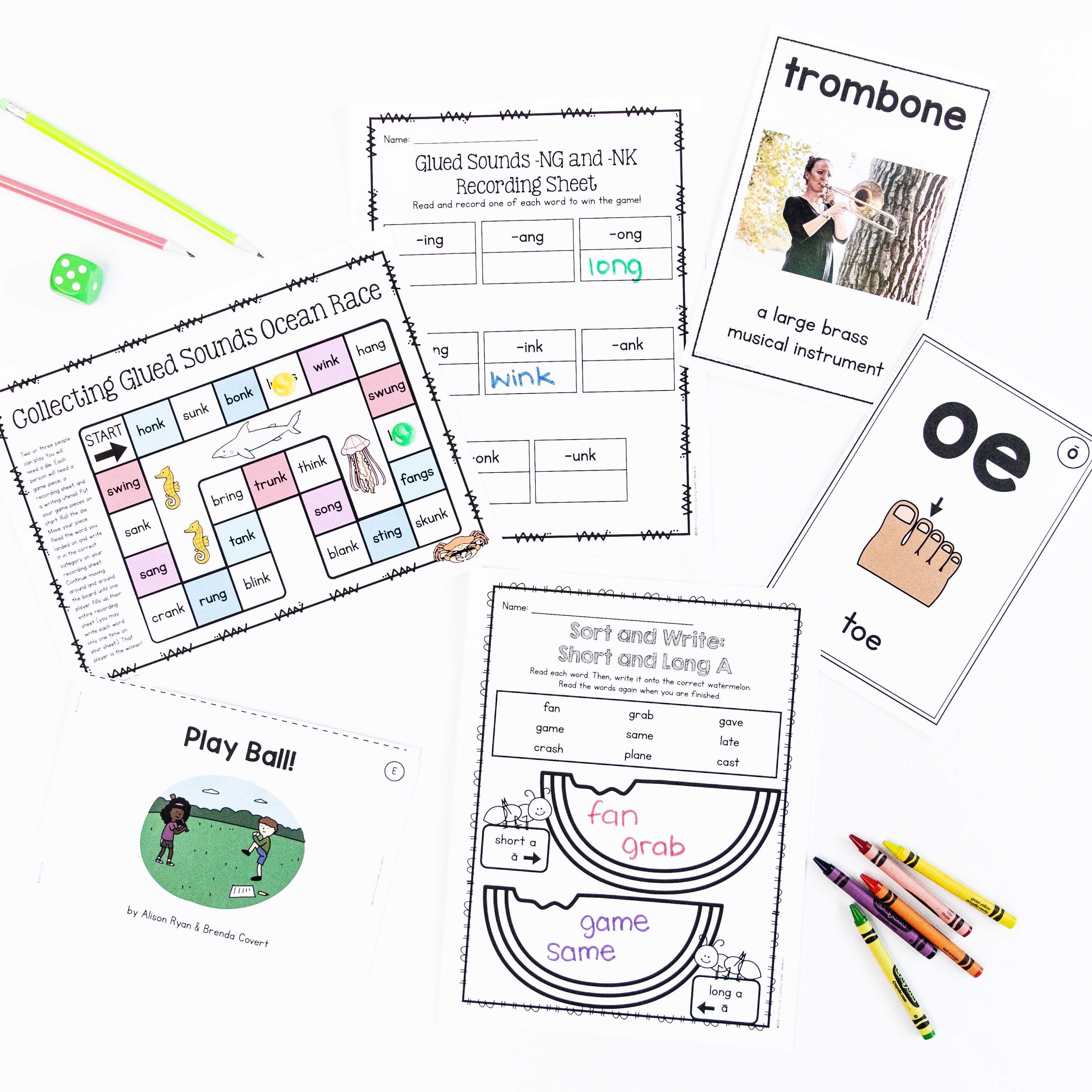
3 Ways Your Phonics Routines Should Change Throughout the School Year
Daily and weekly routines are essential for effective phonics instruction!
Routines help teachers stick to a systematic scope and sequence, maximize instructional time, AND save planning time.
However, your phonics routines shouldn't stay the same throughout the entire school year.
Think about, for example, your Kindergarten, 1st grade, or 2nd grade students at the beginning of the school year vs. the end of the school year. There's definitely a difference, right? Both in their behavioral and instructional needs.
For this reason, your phonics program should shift its routines to reflect how children's needs change throughout the school year. They don't have to be monumental shifts - but changes certainly need to happen.
Here are 3 important ways that your phonics routines should change throughout the school year:
#1: The number of phonics activities per day
Before the school year starts, you'll likely set up a daily and weekly schedule for your phonics instruction. You'll determine what activities will happen each day.
However, you don't need to dive into all of these activities immediately. You'll want to scale back for the first week or two of school - and even longer if you teach Kindergarten.
When you're teaching students activities for the first time, you want to give yourself extra time to teach the basics - like how they should store their magnetic letters, or how to use multi-sensory materials appropriately.
Naturally, activities will take longer than they will when students are fully acclimated to them.
So even if your phonics program doesn't include a slower "start up" period, consider adjusting the lesson plans so that you do fewer activities per day.
And remember, you don't need to spend weeks and weeks in this stage. Simply monitor how your students are doing and add in more activities in as you see fit, until you're fully up and running with your desired routines.
#2: The amount of differentiation
Differentiation is beneficial to students' phonics learning. However, at the beginning of the school year, tons of differentiation is neither necessary nor practical.
When you meet your students at the start of the school year, you need to get to know their needs. You'll likely give them assessments (like this free phonics diagnostic assessment). Gathering and analyzing data takes time, so you won't be ready to differentiate during the first few weeks of school.
On a practical level, teachers are still trying to get to know their students, teach routines, and just get the classroom running. That's a lot of work, and it makes sense to focus on whole group instruction for the first 4-8 weeks (depending upon what grade you're teaching and the needs of your students).
Plus, at the beginning of the year, adding in lots of small group instruction would require the other students to work independently while you're seeing a group. It's not likely that your students will be able to do this immediately at the beginning of the school year - it takes time to establish those independent work procedures.
#3: The content being covered
The previous two areas focused mostly on the unique demands of the beginning of the school year.
But guess what? That's not the only thing to consider when evaluating your routines throughout the year!
As students grow and you move through your scope and sequence, your daily activities will likely need to change.
Here are some recommendations, by grade level, for how routines should change throughout the school year:
Kindergarten
- At the beginning of the year, students will be learning the alphabet. Halfway or three quarters of the way through the year, they will likely be ready to move on to focus on CVC words and word families. This will bring many changes, such as...
- You'll want to spend more time on dictations once students know more sounds and can spell words and sentences.
- You'll spend more time on having students read decodable texts.
1st Grade
- Most 1st graders aren't ready to work on multisyllabic words at the beginning of the school year. However, after you've begun syllable instruction, you'll want to incorporate work with multisyllabic words a couple of times per week by adding a syllable division routine.
- The amount of time you spend on reading a decodable text will likely increase as the school year goes on, as students are able to read more challenging, longer texts.
2nd Grade
- More phonological awareness instruction and practice may be necessary for the first half of the school year than the second half.
- You may be able to spend less time on certain activities, like a blending drill, as students grow in their reading abilities.
Support With Establishing or Refining Your Phonics Routines
If you'd like some (free!) help with determining what phonics routines to implement - or refining your current phonics routines, please register for our free webinar at this link. The webinar will give you an opportunity to learn how specific routines can help you follow science and research-based best practices, save time, and accelerate your students' reading achievement.
Happy teaching!





